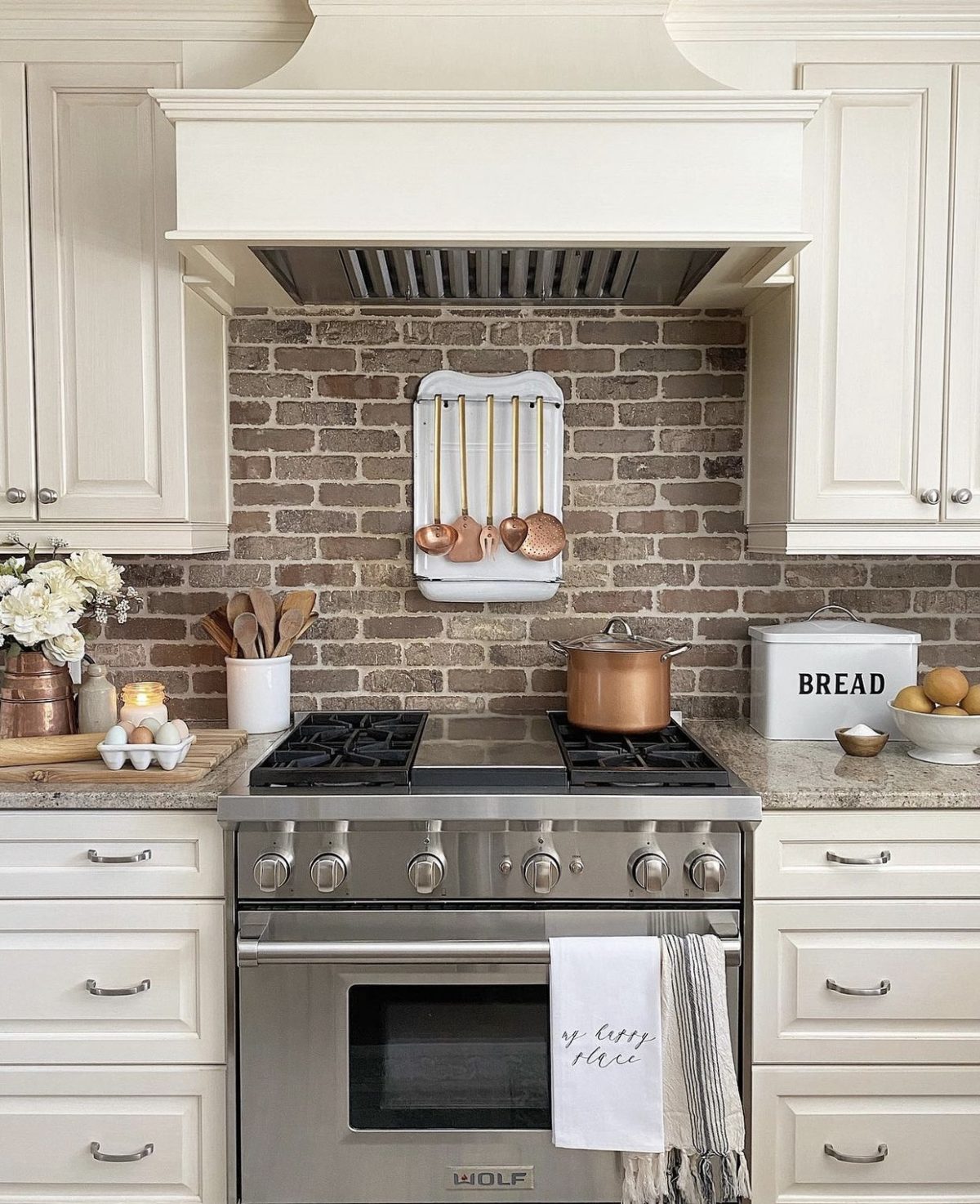Brick backsplashes: they blend rustic charm with modern sophistication, adding warmth and texture to any kitchen. From classic red brick to sleek modern tiles, explore endless design possibilities with a brick backsplash. Discover the durability and easy maintenance of brick backsplashes, a practical and stylish choice for busy kitchens. Create a stunning focal point in your kitchen with a brick backsplash, adding personality and value to your home.
Choosing the Perfect Brick
One of the first steps is selecting the right brick for your project. This crucial decision impacts both the aesthetic and the installation process. Let’s break down the options:
Brick Types
- Real Brick: This offers the most authentic look and incredible durability. Opt for reclaimed brick for a vintage vibe, thin brick veneer if weight is a concern (especially on weaker walls), or new brick for a pristine start. Keep in mind that real brick installation can be labor-intensive and messy.
- Brick Veneer: This lightweight alternative mimics the look of real brick without the bulk. Made from thin slices of brick, porcelain, or ceramic, it’s a DIY-friendly option and easier to manage than full-sized bricks.
- Brick Tile: These individual tiles offer maximum design flexibility. Available in a wide range of sizes, shapes (including subway tile and herringbone patterns), colors, and finishes (matte, glossy), brick tiles can create unique patterns and layouts.
Design Styles
After choosing your brick type, consider the overall design style you want to achieve:
- Classic/Traditional: Warm red brick laid in a running bond pattern creates a cozy, timeless feel. Pair this with natural wood cabinets for a truly classic look.
- Modern/Industrial: Darker brick hues in a stacked or herringbone pattern create a sleek, edgy look. Metal accents enhance the industrial vibe.
- Farmhouse/Rustic: Whitewashed or weathered brick evokes a sense of cozy charm. Combine this with shiplap, open shelving, and vintage accents.
- Transitional: This style blends traditional and modern elements. Neutral-colored brick in a classic pattern creates a balanced, sophisticated look.
Installing Your Brick Backsplash
Installing a brick backsplash can be a manageable DIY project, especially with brick veneer or tile. For full brick, professional installation is often recommended.
Preparation is Key
Before you begin, ensure the wall is clean, dry, and level. Any imperfections will show through the brickwork.
Mortar and Grout Know-How
Choosing the right mortar and grout is essential for a successful installation. Consult your local hardware store expert—they can recommend the best products for your chosen brick type. If you’re looking for a modern, sleek home design, consider incorporating a black modern house aesthetic. The dark hues can create a dramatic backdrop for your brick backsplash.
Sealing: Your Protection Plan
After installation, sealing the brick is crucial. This protects it from stains, moisture, and daily wear and tear, preserving its beauty for years to come. For a touch of timeless elegance, a black brick house can provide a sophisticated setting for your kitchen project.
Maintenance Made Easy
Brick backsplashes are surprisingly low-maintenance. Regular cleaning with a gentle, brick-appropriate cleaning solution and a soft cloth or sponge is usually sufficient. Reapply sealant periodically to maintain its protective qualities – consult the manufacturer’s instructions for frequency. Some experts suggest resealing every few years, while others recommend more frequent applications depending on usage.
Brick vs. Tile: Cost Considerations
While brick backsplashes can add significant value and character to your kitchen, they often come with a higher price tag than tile. The material cost of brick is typically more than tile, and the installation can be more complex, increasing labor costs. However, brick’s durability may offer long-term cost savings.
If budget is a concern, consider brick veneer or tile that mimics the look of brick. DIY installation can also significantly reduce costs, especially with veneer or tile. Remember to get quotes from multiple contractors and suppliers before making a decision.
Is a Brick Backsplash Right for You?
Ultimately, the decision of whether or not to install a brick backsplash depends on your individual needs, style preferences, and budget. Consider the pros and cons:
Pros:
- Durability: Handles heat, moisture, and wear exceptionally well.
- Timeless Style: Adds warmth and texture, adapting to various design aesthetics.
- Easy Maintenance: Simple cleaning and occasional sealing.
- Increased Home Value: A desirable feature for potential buyers.
Cons:
- Porosity: Requires sealing to prevent stains.
- Installation: Can be labor-intensive, especially with full brick.
- Cost: Generally more expensive than tile.
By weighing these factors and exploring the diverse options available, you can make an informed decision and create a beautiful, functional, and long-lasting brick backsplash that truly elevates your kitchen.
- Why Are There So Many Ladybugs in My House This Year? - March 3, 2025
- Yellow Pillows and Throws: A Guide to Styling Your Home with Sunshine - March 3, 2025
- Best Outdoor Heater Lamps for Patios, Decks & More (2024 Guide) - March 3, 2025










